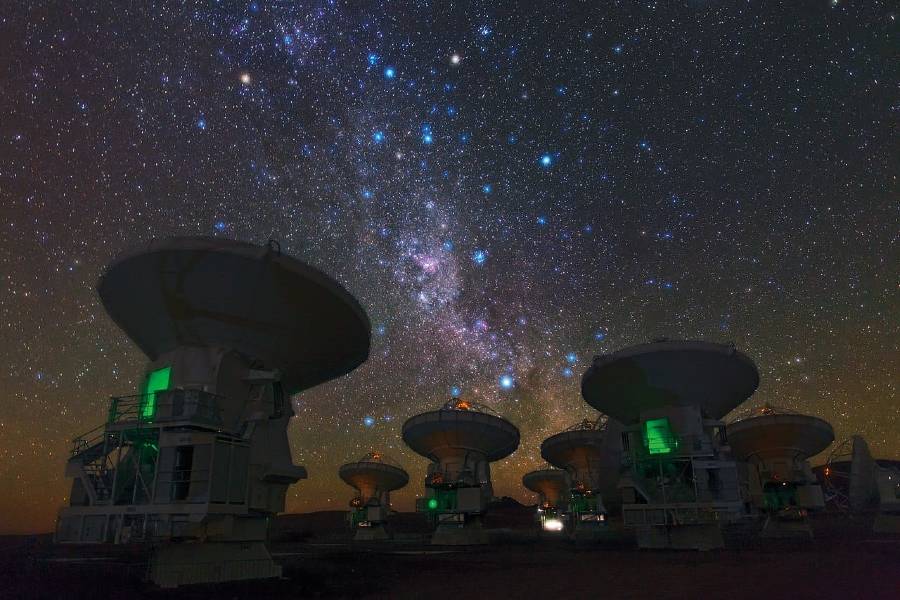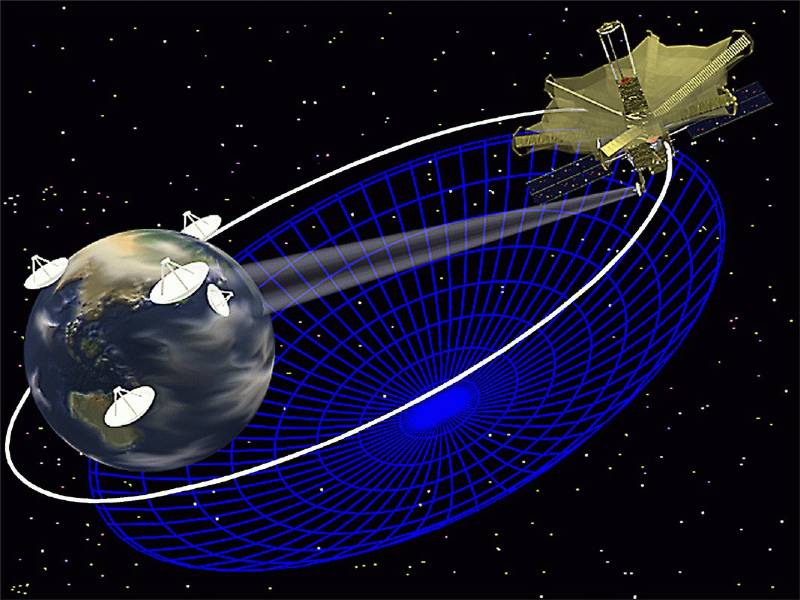There is a revolution going underway in the Astronomical World. In fact, you might say there are a number of revolutions undergoing.
Like Exoplanets research has progressed significantly in the last ten years, gravitational wave astronomy has developed as a new emerging field and the first photographs of Supermassive Black Holes (SMBHs) have been taken.
These findings will also revolutionised the way we used to study the universe.

What Is Interferometry?
Interferometry is a technology that extracts information by using the interference of superimposed waves.
Interferometry has evolved tremendously as a result of highly sensitive instruments and the ability to share and combine data from observatories all over the world. The science of Very-Long Baseline Interferometry (VLBI) in particular is opening up completely new realms of potential.
According to a recent study by Australian and Singaporean researchers, a new quantum approach could improve optical VLBI. It’s termed as Stimulated Raman Adiabatic Passage (STIRAP),
What Is This STIRAP?
STIRAP stands for Stimulated Raman Adiabatic Passage, and it allows quantum data to be transported without loss.
STIRAP (stimulated Raman adiabatic passage) is a technique that uses at least two coherent electromagnetic (light) pulses to move a population between two suitable quantum states. The transitions of the three-level atom or multilevel system are driven by these light pulses. The method is a type of state-to-state coordinated control.
This approach, if imprinted into a quantum error correcting code, could allow VLBI observations at previously unobservable wavelengths. This technology, when combined with next-generation detectors, could enable for more precise studies of black holes, exoplanets, the Solar System, and distant star surfaces.
Zixin Huang, a postdoctoral researcher at Macquarie University’s Centre for Engineered Quantum Systems (EQuS) in Sydney, Australia, led this study. Gavin Brennan, a professor of theoretical physics at the National University of Singapore (NUSDepartment )’s of Electrical and Computer Engineering and the Centre of Quantum Technologies, and Yingkai Ouyang, a senior research fellow at NUS’s Centre of Quantum Technologies, accompanied her.
“To put it in a simple way, interferometry is a technique that involves combining light from multiple telescopes to make photographs of an object that would otherwise be too hard to resolve”.
What Is This VLBI?

Very-long baseline interferometry (VLBI) is a radio astronomy technique that combines signals from astronomical radio sources (black holes, quasars, pulsars, star-forming nebulae, and so on) to produce precise images of their structure and activity.
The time difference between the arrivals of the radio signal at various telescopes is then used to measure the distance between them. This enables observations of the same object made by many radio telescopes to be merged, simulating a telescope with a size equal to the maximum spacing between them.
“Current state-of-the-art big baseline imaging systems work in the microwave band of the electromagnetic spectrum,” Dr. Huang told Universe Today via email. To achieve optical interferometry, all components of the interferometer must be stable to within a fraction of a wavelength of light, allowing light to interfere.
Why Is It Difficult To Carry This Out In Long Distances?
This is extremely difficult to do over long distances: sources of noise can come from the device itself and external factors too, thermal expansion and contraction, vibration, and so on; besides, there are losses connected with the optical elements.
“The goal of this line of research is to enable us to transition from microwaves to optical frequencies; these approaches are also applicable to infrared. In the microwave, we can already perform large-baseline interferometry.
However, at optical frequencies, even the fastest electronics cannot directly record the oscillations of the electric field, making this task extremely difficult.”
Significance Of STIRAP
According to Dr. Huang and her team, using quantum communication techniques like Stimulated Raman Adiabatic Passage is the key to overcoming these constraints. STIRAP works by transferring optical information between two quantum states utilising two coherent light pulses.
According to Huang, when used with VLBI, it will enable efficient and selective population transfers between quantum states without the normal difficulties of noise or loss.
The mechanism they foresee would entail coherently coupling the starlight into “black” atomic states that do not radiate, as they describe in their study (“Imaging stars with quantum error correction”).
According to Huang, the next step is to combine the light with quantum error correction (QEC), a quantum computing approach that protects quantum information from errors caused by decoherence and other “quantum noise.”
However, as Huang points out, this same approach could enable more precise and detailed interferometry:
“To simulate a huge optical interferometer, light must be gathered and processed in a coherent manner, and we propose using quantum error correction to reduce mistakes caused by loss and noise in this process.”
“Quantum error correction is a rapidly growing field whose primary goal is to enable scalable quantum computing in the face of mistakes.” We can retrieve the information we need from starlight while decreasing noise using pre-distributed entanglement in combination with it.”
How Was The Test Of This Idea Conducted?
To put their idea to the test, the researchers imagined a scenario in which celestial light is collected by two facilities (Alice and Bob) separated by a large distance.
Each has pre-distributed entanglement and “quantum memories” into which the light is trapped, as well as its own set of quantum data (qubits) that it converts into some QEC code. A decoder imprints the acquired quantum states onto a common QEC code, which secures the data from subsequent noisy operations.
The signal is captured into quantum memories in the “encoder” stage using the STIRAP technology, which allows incoming light to be coherently linked into a non-radiative state of an atom.
What Would Happen If The Inferometry Captures Light From Astronomical Sources?
It would be a game-changer for interferometry to be able to capture light from astronomical sources that accounts for quantum states (and eliminates quantum noise and information loss). Furthermore, these advancements would have far-reaching repercussions for other branches of astronomy that are currently undergoing transformations.
“Such a quantum imaging network will boost imaging resolution by three to five orders of magnitude by shifting into optical frequencies,” Huang added.
“It would be powerful enough to image small planets orbiting nearby stars, features of solar systems, kinematics of stellar surfaces, accretion discs, and potential details around black hole event horizons none of which can be resolved by present programmes.”
Conclusion
The James Webb Space Telescope (JWST) will characterise exoplanet atmospheres like never before in the near future, thanks to its advanced suite of infrared imaging equipment. Ground-based observatories such as the Extremely Large Telescope (ELT), Giant Magellan Telescope (GMT), and Thirty Meter Telescope are no exception (TMT).
These observatories will permit direct imaging investigations of exoplanets, revealing vital information about their surfaces and atmospheres, thanks to their enormous main mirrors, adaptive optics, coronagraphs, and spectrometers.
Observatories will have another way to obtain photos of some of the most inaccessible and difficult-to-see objects in our Universe by combining new quantum techniques with VLBI. The secrets that this could uncover are certain to be revolutionary.
